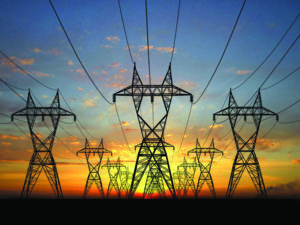EIA Notes Power Demand Destruction From Coronavirus
The post EIA Notes Power Demand Destruction From Coronavirus appeared first on POWER Magazine.

The coronavirus pandemic is altering the power landscape, with utilities and other power generators forced to adjust for load disruptions. Power consumption is changing as commercial and industrial electricity users close their businesses, and load is shifting to the residential sector with workers now settled in home offices, and students practicing remote and distance learning.
The U.S. Energy Information Administration (EIA) in its latest Short-Term Energy Outlook (STEO) published April 7 said it expects significant impacts to U.S. electricity consumption, and the group has lowered its estimates for power generation through the rest of this year.
"The economic slowdown and stay-at-home orders will likely affect U.S. electricity consumption over the next few months, with the largest impact occurring in the commercial sector because of business closures," according to the outlook. "We also estimate that sales of electricity to industry will fall as factories cut back production. In the residential sector, reduced power usage resulting from milder winter and summer weather will offset increased household electricity consumption as people stay at home."
EIA noted that the COVID-19 pandemic "has caused significant changes in energy fuel supply and demand patterns," resulting in a crash in crude oil prices, and "similar uncertainties persist across EIA's outlook for other energy sources, including natural gas and electricity."
The agency said it "forecasts that total U.S. generation will decline by 3% in 2020. EIA expects renewable generation will account for most new generating capacity in 2020. Renewable generation will grow by 11% in 2020 as fossil fuel generation declines. The resulting economic slowdown related to COVID-19 will likely impact new renewable generating capacity builds in the short term. We have lowered our 2020 estimates for annual wind and solar capacity additions by 5% and 10%, respectively, from last month's forecast."
Impacts on Commercial SectorThe EIA report said the agency expects the largest impact to power generation "will occur in the commercial sector where forecast retail sales of electricity fall by 4.7% in 2020 due to the closure of many businesses. Similarly, EIA expects retail sales of electricity to the industrial sector will fall by 4.2% in 2020 as many factories cut back production." The group said its forecast of U.S. electricity sales to the residential sector will drop by 0.8%, noting "reduced power usage resulting from milder winter and summer weather is offset by increased household electricity consumption as much of the population stays at home."
The EIA said the growth in renewable power generation in part is due to its "low operating cost," and noted it expects generation from coal-fired power plants will fall significantly.
"The forecast for lower overall electricity demand leads to an expected decline in fossil-fuel generation, especially at coal-fired power plants," the EIA said. "EIA expects that coal generation will fall by 20% in 2020. Forecast natural gas generation rises by 1% this year, reflecting favorable fuel costs and the addition of new generating capacity."
The agency noted the impacts of COVID-19 on power generation new-builds as the U.S economy slows. "EIA expects that the electric power sector will add 19.4 gigawatts of new wind capacity and 12.6 gigawatts of utility-scale solar capacity in 2020," the agency said in the STEO. "These annual wind and solar capacity additions are 5% and 10% lower, respectively, than expected in the previous STEO."
New Report on Demand DestructionEnverus, an energy data and analytics company, on April 7 released its latest report about demand destruction, the decline in electricity consumption that is occurring nationwide due to COVID-19. Enverus twice daily forecasts power consumption to help utilities balance supply and demand of electricity for their consumers. The report, "What Machine Learning Helps Us Know About Power Demand Destruction During COVID-19," was written by Rob Allerman, senior director of Power Analytics for Enverus.
Laura Blewitt, a marketing manager with Enverus Trading & Risk in Texas, said Enverus was faced with never-before-seen scenarios as a result of the nationwide COVID-19 shutdowns. "Enverus machine learning-based forecasting tools have never learned the demand dynamics at play-nor had the power analytics team," Blewitt told POWER.
Blewitt noted that how Enverus' models normally work no longer applies. Traditionally, the company's machine-learning models look at actual temperature and power demand data from previous days and weeks, learning as it goes. "The models were built to respond to load growth or anything that may be happening in the market," said Blewitt.
To measure the load impacts from COVID-19, Blewitt said Enverus launched a new model that knows what the temperatures were for the load from February 2019 to February 2020. But it doesn't know anything that's been happening over the past month.
This report shows first results from the new forecast model and analysis of demand destruction based on same/similar temperatures and load pre and post, using data back to 2019 and adjusting to load growth when appropriate.
A summary of the key findings:
- Load peaks are shifting in the mornings, particularly in northern regions of the U.S. Loads that previously peaked around 7 a.m. local time are now closer to 8 a.m. as Americans are adjusting morning routines.
- In NYISO, the emerging epicenter of the pandemic, demand destruction increased from 7-10% (1,300-2000 MW) to 10-15% (1,600-2,400 MW). Localized pockets around New York City are likely much higher.
- ERCOT load demand destruction is softer, increasing to just 3-5% (1,000-2,000 MW).
- Demand destruction has been accelerating in PJM. When comparing similar temperature hours to pre-COVID-19 load, demand destruction has increased from 4-6% (4,000-6,000 MW) to 8-12% (6,000-10,000 MW).
Allerman notes that "While it is very early in our assessment of the power load demand destruction impacting U.S. ISO markets, it's clear that COVID-19 has had material impacts on electricity consumption."
-Darrell Proctor is associate editor for POWER (@DarrellProctor1, @POWERmagazine).
The post EIA Notes Power Demand Destruction From Coronavirus appeared first on POWER Magazine.